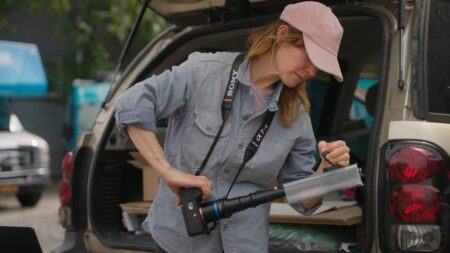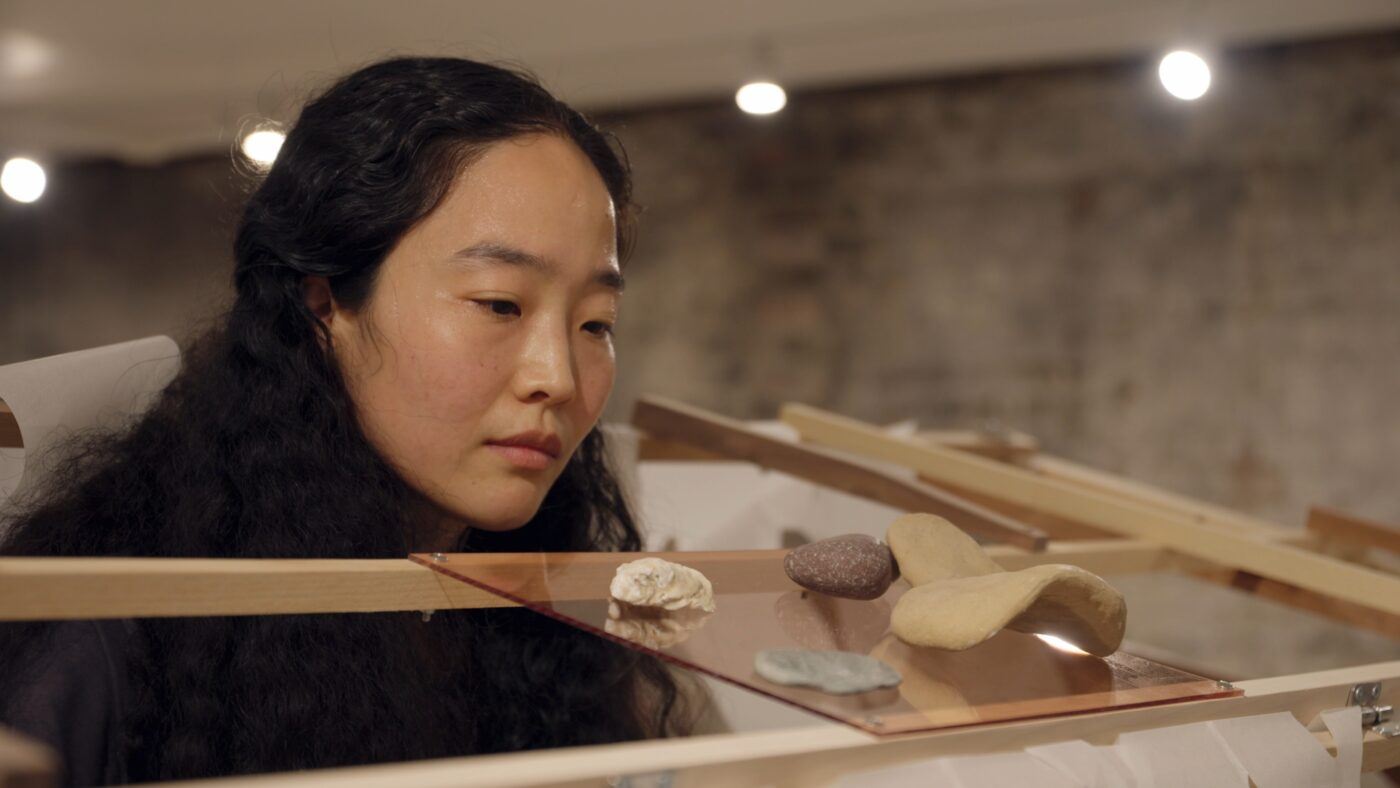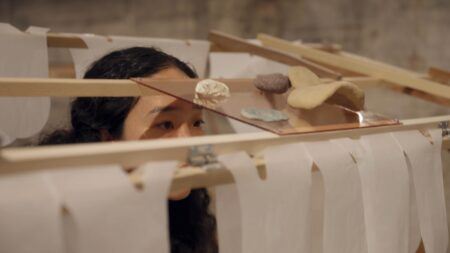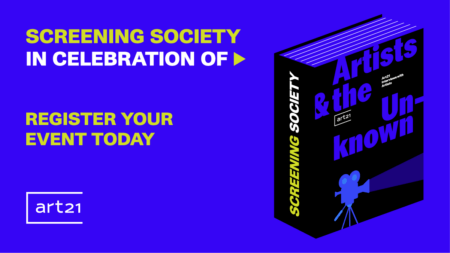When I was first introduced to Hyeree, I fell in love with her work immediately. Given our shared background—we’re both East Asians living in the US, existing between two languages and two places—it’s perhaps not surprising that I resonated with Hyeree’s musings around language and the idea that when you’re speaking one language, you’re one person, and when you’re speaking another language, you’re kind of a different person. The self is a blend of both of these people and when you’re physically in one place thinking about the other place, you really exist in the middle.
But beyond our common ground, Hyeree’s work stood out to me because she is able to say so much with its minimalistic visual sensibilities, and how she conveys a multitude of emotions and ideas in very few words. Throughout the making of this film, Hyeree and I had many discussions about the meaning and challenges of making autobiographical work, and while we didn’t come to any conclusion, I knew I wanted the film to have the same quality of vulnerability and honesty that flows through Hyeree’s work.

A big part of Hyeree’s Niro, which is at the center of this film, was about thinking through the road trips that Hyeree took with her father. While we thought about filming original footage to visualize those journeys, we ended up asking Hyeree for footage from her own archive. Much like how Hyeree collects objects she encounters in her daily life that might one day end up in one of her sculptures or performances, she is also in the habit of collecting video and audio clips of her trips on her phone. There’s something very spontaneous and intimate about the footage that would have been difficult for us to emulate, so we incorporated it into the edit to give the audience a sense of what it might feel like to be on a road trip with Hyeree.
Early on in my discussions with Hyeree about how we wanted to approach this film, we decided that we would do several interviews over the phone, instead of a single formal sit-down interview with cameras, lights, microphones, and a whole crew. Because a lot of the ideas behind Niro are very personal, I wanted to create a space with some privacy. Having multiple conversations over the course of a few months gave us some time to develop a relationship and trust, and afforded us the opportunity to exchange more intimate stories and delve deeper into her ideas. Conceptually, it felt fitting for the film because when Hyeree is on road trips, especially if she’s alone, she calls friends and family to catch up over the phone. Without the pressure of doing an activity when spending time together in person, phone calls become this dedicated time and space to connect with loved ones living far away, providing a sense of safety and comfort. In the post-production process, we treated these “road trip” sections differently from the rest of the film, insetting Hyeree’s personal road trip footage within black borders and slightly muffling the audio quality in the voiceover to evoke the special frame of mind a road trip conjures.

Editor Yeon Park and I took inspiration from the way Hyeree structured the Niro performance in chapters and assembled this film in a similar manner in the editing process; each scene serves as a vignette that adds to the larger story, but isn’t a full picture, leaving space for the audience to connect the dots. This structure helped us find the delicate balance between sharing just enough of Hyeree’s story to provide some context for the project Niro, shedding light on the process of creating the work, and giving the viewers the time to be immersed in the performance itself. After establishing that structure, we received invaluable feedback from the team about incorporating an archival survey of Hyeree’s past work. While the montage initially felt like an outlier in the film, it ended up becoming one of my favorite sequences in the film, as it added visual variety to a film that otherwise focused on Niro, and gave us the chance to talk about Hyeree’s practice more broadly and show the breadth of her work.
Making every short film is always its own unique challenge, but this was one of the most difficult films I’ve worked on for Art21, perhaps because of how much Hyeree’s work resonated with me and how much I wanted to express that in the film, while still being a little protective of the personal aspect of it all. As a filmmaker, I think a good Art21 film is one that reflects the featured artist’s aesthetics both in its style and feeling, and this was something I constantly reflected on throughout the process of making this film. My hope is that the film presents viewers with enough structure to enter Hyeree’s world, while leaving enough space to hold each person’s thoughts and stories.
Andrea Yu-Chieh Chung
Director, “Hyeree Ro’s Precise Ambiguity”



